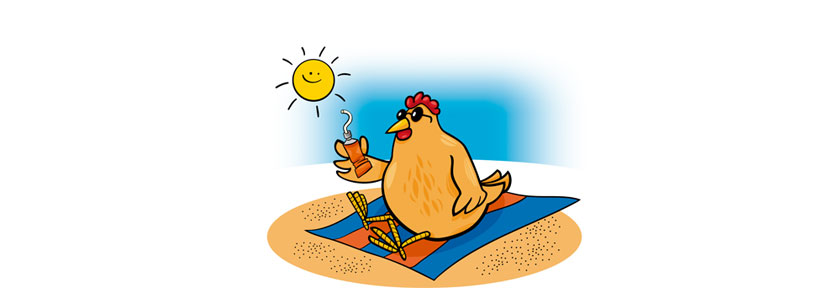Content available at: Español (Spanish)
- At times of increased temperature, we observe a decline in the productive results of broilers, most notably a decrease in the average daily weight gain.
From a physiological point of view, increased temperatures is also influenced by the faster growth rate of modern birds, so the optimum temperatures for such rearing should tend to slightly decrease. In other words, today’s chickens are undoubtedly more sensitive to temperature increases, so the measures to be taken in management, especially environmental control and feeding to reduce the action of excess temperature, are more important.
“Today’s chickens are undoubtedly more sensitive to temperature increases, so the management measures to be taken, especially environmental control and feeding to reduce the action of excess temperature are more important”
- The decrease in feed consumption in hot periods is clear and leads to a reduction in growth rate, “in summer there is always a lack of weight in the chickens”. But it is also true that the decrease in feed consumption is less than the decrease in growth rate and this fact increases with the birds’ age.
- The decrease in weight gain compared to the decrease in feed consumption is due to modifications in the energy and protein metabolism of the birds that lead to an increase in the feed conversion rate. Feed reduction due to heat stress causes a decrease in the protein percentage and an increase in the fat percentage, while feed consumption reduction at normal temperatures only decreases the fat percentage.
TO CONTINUE READING REGISTER IT IS COMPLETELY FREE Access to articles in PDF
Keep up to date with our newsletters
Receive the magazine for free in digital version REGISTRATION ACCESS
YOUR ACCOUNT LOGIN Lost your password?

